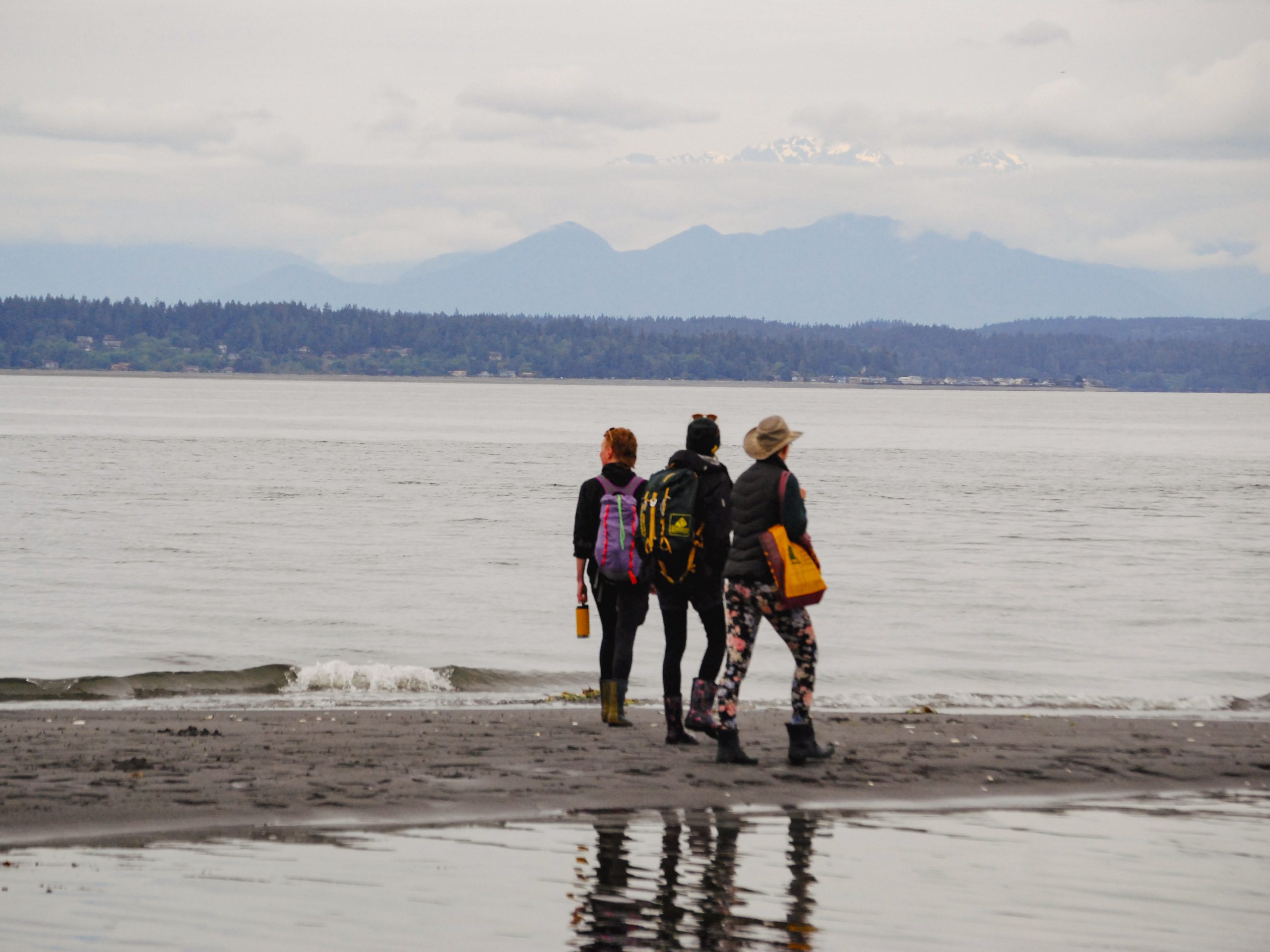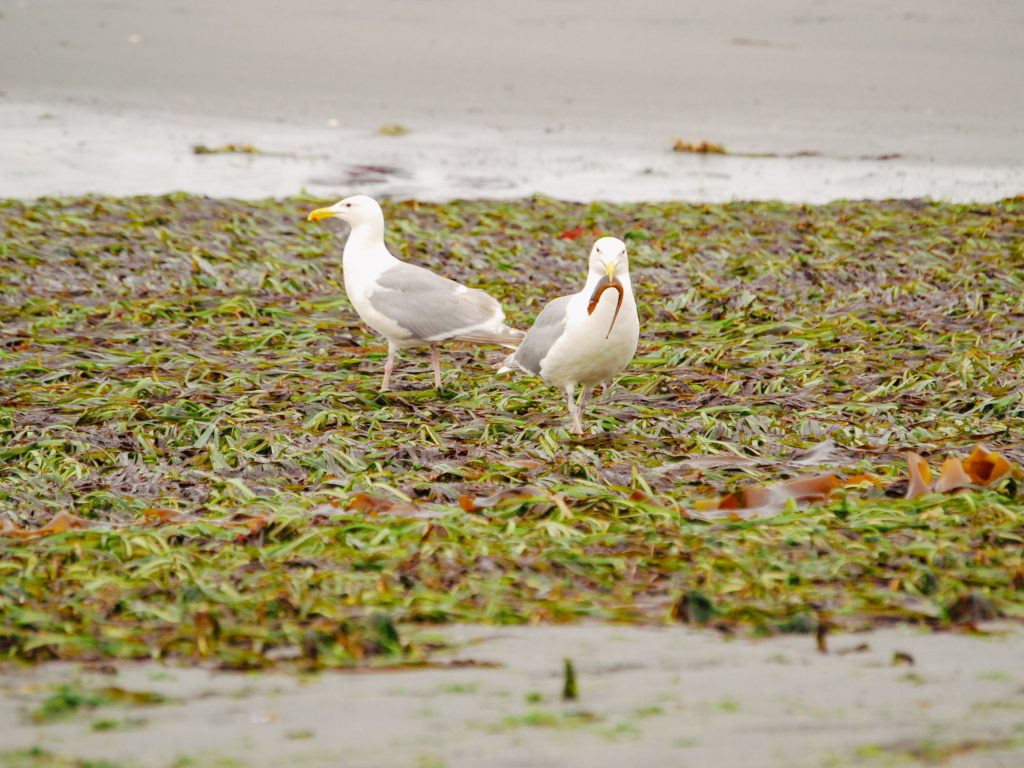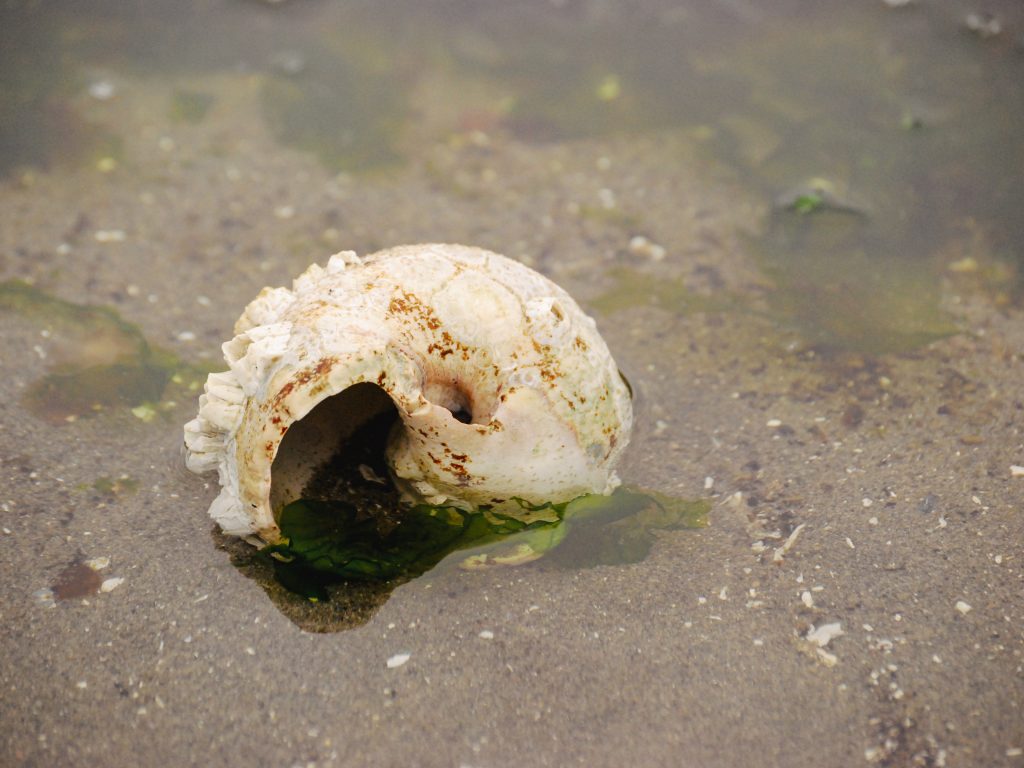In the third consecutive summer of pandemic-related closures, NOAA Science Camp brought new programming to the beach during an extreme low tide
By Ashli Blow, WSG Science Communications Specialist
 When Puget Sound receded during an extreme low tide in June, Maile Sullivan, Washington Sea Grant education specialist, and a team from NOAA Science Camp and the Seattle Aquarium put on their boots and headed for the shores of Golden Gardens Park in Seattle.
When Puget Sound receded during an extreme low tide in June, Maile Sullivan, Washington Sea Grant education specialist, and a team from NOAA Science Camp and the Seattle Aquarium put on their boots and headed for the shores of Golden Gardens Park in Seattle.
The low tide had uncovered an array of wildlife that we don’t get to see every day: sea stars, nudibranchs, baby sculpins, anemones. This potential for tide pooling brought many marine enthusiasts to beaches across the state — and this increased foot traffic brought on potential harm for the soft-bodied organisms that were exposed to the air. This prompted NOAA Science Camp to partner with beach naturalists from the Seattle Aquarium to teach people how to responsibly explore creatures in the eelgrass and rocky intertidal area during low tide.
Sullivan has coordinated NOAA Science Camp for nearly 15 years. The camp historically offered two week-long sessions for middle and high schoolers with hands-on learning experiences. Due to the pandemic, WSG couldn’t hold an in-person camp for the third year of a row. This summer, Sullivan seized the opportunity to work with partners like the Seattle Aquarium, whose naturalists regularly teach beach etiquette during low-tide events.
That day at Golden Gardens, as beach naturalists gave tours of the tidepools, Sullivan and NOAA scientists took water samples and set up a table with a microscope to show organisms like phytoplankton to people of all ages.
“Since we couldn’t host camp again this summer, WSG was looking for community partners to get out with and share with people why science is cool. We worked together to educate people on what was in the tidepools and show them what they can’t see with the naked eye,” said Sullivan.
“By being here, we’re hoping to encourage kids to sign up for camp in the future. In the meantime, we’re getting out into the field, which is what we love to do during the summer.”

The pandemic changed NOAA Science Camp as WSG knew it for two decades and like many things, in 2020 it went virtual. In addition to hosting a variety of online webinars in partnership with NOAA Live!, Science Camp also worked with scientists to record videos of themselves introducing various at-home hands-on activities, so that the students could then work on science experiments at their own pace. Then, at the end of each week, students had an opportunity to discuss their experiments with the scientists in a live video chat.
In 2021, her team set out to do the same thing, but as the year progressed they became more aware of Zoom burnout. Instead of a live camp held on Zoom, Sullivan’s team developed an asynchronous curriculum with curated NOAA activities that explored climate change in a warming oceans, food habitats in marine mammals, and more. Additionally, Sullivan collaborated with the University of Washington’s Disabilities, Opportunities, Interworking, and Technology (DO-IT) Program on a seven-day workshop featuring virtual field trips that took kids on a digital journey of shorelines, tours of NOAA Labs, and a fish collection.
 This summer presented unique challenges in programming. Over the winter 2021–2022, the omicron variant surged, and video fatigue was worse than ever. Without a clear indication of COVID trends, Sullivan was unable to plan an in-person Science Camp for another year. Sullivan and her team adapted again, this time turning to community partners.
This summer presented unique challenges in programming. Over the winter 2021–2022, the omicron variant surged, and video fatigue was worse than ever. Without a clear indication of COVID trends, Sullivan was unable to plan an in-person Science Camp for another year. Sullivan and her team adapted again, this time turning to community partners.
“Before COVID, NOAA Science Camp was a well-oiled machine. But the past couple of years have really given us an opportunity to think about how to reach new audiences, work with new partners, and make our programs more accessible,” Sullivan said.
By working with partners like the Seattle Aquarium, NOAA Science Camp could meet people where they already were going – like Golden Gardens during the low tide. Not only do such outreach events bring visibility to NOAA Science Camp, but both parents and kids get to experience a day of marine magic together.
“We are all very hopeful that our traditional NOAA Science Camp will be back in action next summer,” Sullivan said. “But in the meantime, we are having fun getting our feet wet and exploring our incredible coastline with the community.”
Watch
For a visual version of this story, watch a video featuring underwater footage and hear from Sullivan. Watch it on our YouTube page or below.
www.wsg.uw.edu
Join the conversation: @WASeaGrant and Facebook.com/WaSeaGrant.
SEP
2022